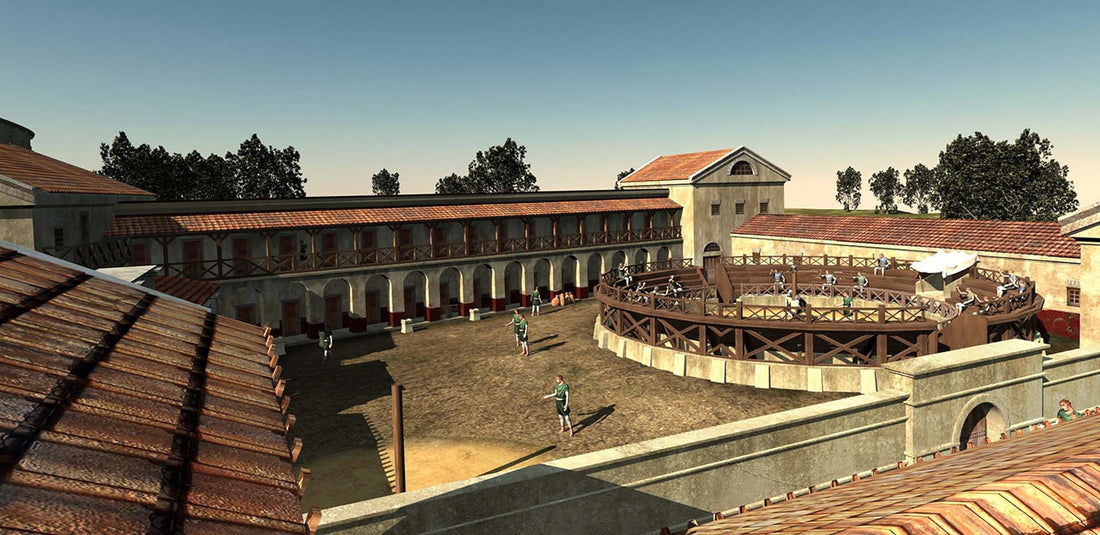How is life as a gladiator? Life is great and tough like an athlete, except for the death rate of around 20% in the arena. Only one gladiator, who survived an extraordinary 150 bouts, survived more than 10 death fights that most gladiators do.
Unlike some beliefs, not all gladiators are slaves or criminals. There are people who became a gladiator by choice and trained hard or criminal and slaves who are forced to train and fight.
What type of people become a gladiator
In ancient Rome, highly trained gladiators faced each other in the Colosseum and fought to the death for the entertainment of thousands of spectators.
- The audience has their say and a Gladiator was a condemned criminal, a prisoner of war, or a slave bought for the purpose of being trained as a gladiator.
- Professional gladiators were often free men who volunteered to participate in the events. These free men although they were low on the social scale would often become popular amongst the crowds and find popularity and patronage with wealthy Roman citizens over their criminal counterparts.

Typically a gladiator was sent to a gladiator school and depending on whether he was a criminal or not he was either trained to use weapons or taught to be a gladiator who would enter the gladiatorial arena weaponless.
A criminal or slave could even earn their freedom if they survived three to five years of combat. A gladiator was only required to fight two to three times a year. That would be equivalent to winning around 10 to 15 fights to claim their freedom.
Gladiator life expectancy
Few survived the three to five years of gladiator fights, even though 6 to 15 fights sound little as competition is stiff and tough with death matches between 2 gladiators (sine missione).
According to some historians, fewer than 20% of them died in the arena. (historycollection.com)
Despite the relatively small death rate during combat, the average life expectancy of a gladiator was only in the mid-twenties.
Most only lived to their mid-20s, and historians have estimated that somewhere between one in five or one in 10 bouts left one of its participants dead. (history.com)
In fact, under Augustus' rule, the demand for gladiators exceeded supply, and sine missione was officially banned as an economical and pragmatic development to match popular notions of "natural justice". When Caligula and Claudius refused to spare defeated but popular fighters, their own popularity suffered. In general, gladiators who fought well were likely to survive.
Other than dying in the arena, gladiators were treated as investments and well taken care of. They were subjected to rigorous training, fed on a high-energy diet, and given expert medical attention. Those who ran gladiator schools didn't want their fighters to die because each man and woman was an expensive investment.
Few gladiators survived more than 10 contests, though one survived an extraordinary 150 bouts; and another died at 90 years of age, presumably long after retirement (en.wikipedia.org)

Above all, gladiatorial combat was a display of nerve and skill. The gladiator, worthless in terms of civic status, was paradoxically capable of heroism. Under the Roman empire, his job was one of the threads that bound together with the entire social and economic fabric of the Roman world.
A gladiator who was refused missione was despatched by his opponent. To die well, a gladiator should never ask for mercy, nor cry out.
What was life like for a gladiator
Gladiators trained like modern athletes do today. They received three square meals a day to keep them healthy and strong and they got medical attention if they needed it. They trained for hours each day and learned how to use various weapons including the war chain, net, trident, dagger, and lasso.
"The find at Carnuntum gives us a vivid impression of what it was like to live and train as a gladiator on the chilly northern border of the Roman Empire," says gladiator expert Kathleen Coleman of Harvard.
The training was intense, but in the beginning, the focus was on increasing the fitness of the gladiators. As a result, initial combat involved wooden swords honing the fighters' technique and teaching them different fighting styles. The precise type of training they received depended on how much armor they wore; heavily armored warriors needed to learn different methods than lightly armored gladiators for example.
Trainers taught their warriors how to wound and not kill opponents while gladiators were probably reluctant to kill. Each gladiator could choose how they wished to fight – they could choose their armor and their weapon of choice. They would dress up for the crowds and wear helmets, specially shaped shields and some would only wear a loincloth.
What did gladiators do in a day in gladiator school?
Archaeologists have mapped an ancient gladiator school, where the famed warriors lived, trained, and fought.

Source: Carnuntum Ludus, M.Klein / 7reasons
There were three major gladiator training schools, with Capua probably the most famous for producing high-quality fighters. It wasn't unusual for agents to roam the empire to find potential gladiators; then they would try and persuade them to come and fight.
At least 80 gladiators, likely more, lived in the large, two-story facility equipped with a practice arena in its central courtyard. (nationalgeographic.com)
Gladiators may have been involved in these as executioners, though most of the crowd, and the gladiators themselves, preferred the "dignity" of an even contest.
Remains of a Pompeian ludus site attest to developments in supply, demand and discipline; in its earliest phase, the building could accommodate 15–20 gladiators. Its replacement could have housed about 100 and included a very small cell, probably for lesser punishments and so low that standing was impossible.
Gladiatorial displays were red-letter days in communities throughout the empire. The whole spectrum of local society was represented, seated strictly according to status. The combatants paraded beforehand, fully armed. Exotic animals might be displayed and hunted in the early part of the program, and prisoners might be executed, by exposure to the beasts.
Were gladiators stronger than legionnaries?
A gladiator would be like a street fighter while a legionary would be like a triathlon competitor. A legionnaire had to march, build his own fortified camp, and be able to survive an eight-hour battle without a tea break. No disrespect to gladiators but legionnaires are legendary.
Conclusion
Life as a gladiator is deadly, short term and tough. Enough said.




